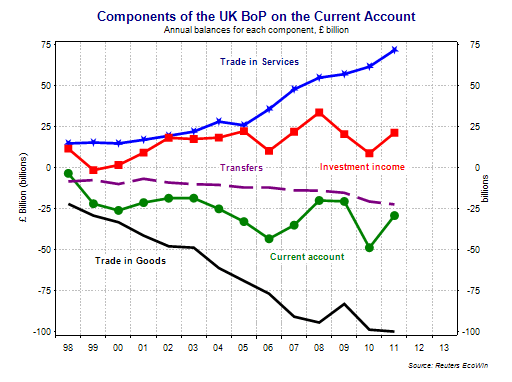What is Balance of Payments (BoP)
Post on: 16 Август, 2015 No Comment

by Manshu on May 27, 2012
Balance of Payments (BoP) is an account of the international transactions of a country, and shows how the country is faring in trade, attracting capital from abroad, and the effect of that on its foreign exchange reserves.
The budget website has a BoP document and that contains the components of the BoP and understanding the components is a very good way to understand what BoP is.
When talking about the BoP you will usually hear reference to the current account and the capital account and along with the change in forex reserves these form the most important parts of the reserves. They have mentioned errors and omissions as the fourth part, and Ive included it for accuracy but if you think about it, thats not really a head on its own.
Before we go any further, lets look at this chart that has the hierarchy of these components and then look at each component one by one.
What is Balance of Payments
Current Account
The current account shows you the trade position of the country. It shows you the merchandise imports and exports, and then the invisibles part of it is also trade but its that part of trade where there is no physical good exported or imported.
In Indias case, the transfers and grants part of the invisibles is quite big relative to other countries because of the large Indian diaspora.
As far as I know India has always run a current account deficit which means that it has always imported more than it has exported. This is something Ive touched upon several times earlier and if you want to read more about this you can read the posts on what India imports and exports.
The rest of this is fairly self explanatory so Ill move to the capital account now.
Capital Account
Where current account shows you trade, capital account can be thought of as the investments part of the international transactions.
This is further broken out into equity and debt investment and the FII money and FDI money is part of the equity investments while the external commercial borrowings, money deposited in banks by NRIs and trade credits are debt investments.
Till recent years, Indias current account deficit was being financed by a capital account surplus which meant that foreigners were buying more assets in India or lending more capital to India than India was doing to the rest of the world, and as a result the foreign exchanges reserves were steadily growing. However, the trend has reversed lately, and even the capital flows have been negative.
Change in forex reserves
The difference between the current account and the capital account is reflected in the change in the forex reserves.
For example, in 2010 11 Indias current account deficit was $45.9 billion but the capital account surplus was $62.0 billion and this resulted in increase in foreign exchange reserves of $13.1 billion. This doesnt exactly total up due to the effect of errors and omissions.
Indias forex reserves had dwindled to lows of $5.1 billion in 1991 and as a result India had to borrow from the IMF by pledging its entire stock of gold. The IMF simply didnt lend money against the gold, but India had to physically move all its gold to IMF locations and people talk about Air India planes full of Indias gold.
Though that happened more than two decades ago, it is always fresh in memory for most people and thats why as soon as the foreign reserves start going down you start reading articles that talk about a BoP crisis or a repeat of 1991.
At over $290 billion, Indias position is far better than it was in 1991 but if you look at the example of any of our neighboring Asian tigers, or even the western countries when they were growing, all of them have grown by relying on exports and running trade surpluses, and thats what Indias goal should also be.














